Top Autumn Trek in Nepal: Experience the Himalayas at Their Best
Autumn is the best time for trek in Nepal. During this period of September to November. This is the season during which the weather will not be cold, the skies are clear, and the Himalayas are seen under the best conditions of visibility. For all nature and adventure lovers, this is high time to be a part of some of the stunning trekking routes in the world in Nepal.
Herein, a guide through the top Autumn treks with breathtaking views, cultural insight, and lifetime memories has been provided.
1. Everest Base Camp Trek
Everest Base Camp Trek: The trek has led one deep into the heart of the Khumbu section for unmatched views of the Earth’s highest peak, Mt. Everest, which is 8,848 meters above. The path passes through a stunning avenue through Sagarmatha National Park, enlisted on UNESCO’s World Heritage Site; energetic Sherpa culture; crossing suspension bridges, ancient monasteries, and picture postcard villages.

Major attractions:
- Everest View: Mighty Everest close-up views amongst other towering peaks such as Lhotse, Nuptse, and Ama Dablam.
- Kala Patthar: Sunrise and sunset panoramic viewpoint for Everest and surrounding peaks.
- Namche Bazaar: Very lively Sherpa town markets, bakeries, and cultural museums.
- Tengboche Monastery: The largest monastery in the Khumbu region and is famous for spiritual aura along with mountain backdrop.
2. Annapurna Circuit Trek
The most famous Annapurna Circuit Trek encompasses various landscapes that range from subtropical forests to arid landscapes of the Tibetan plateau. It is also a trek around the massif of Annapurna, crossing over the formidable Thorong La Pass at 5,416 m. It covers different kinds of ecosystems, rich cultural heritage, and breathtaking views of peaks such as Annapurna and Dhaulagiri along the route.
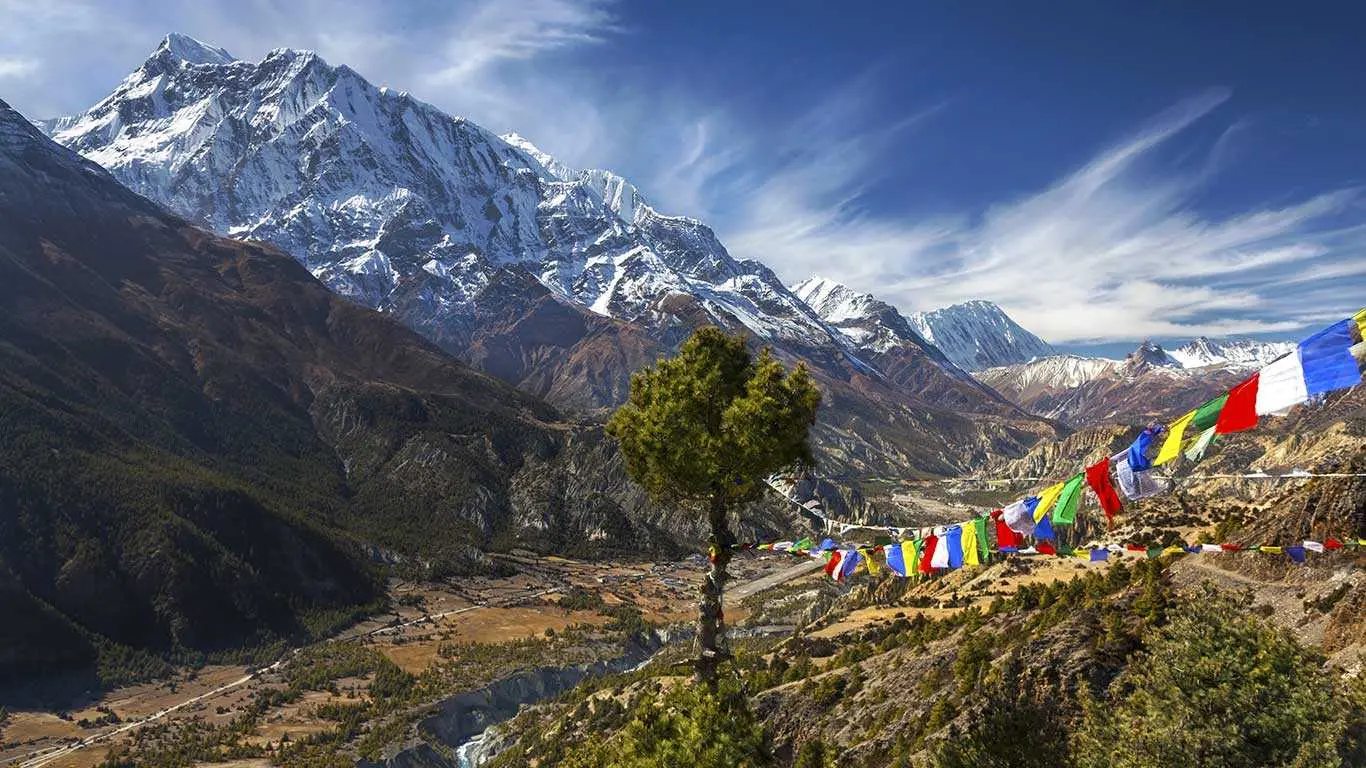
Major Attractions:
- Thorong La Pass: The highest point of the trek, one can have awesome mountain vistas from here.
Muktinath Temple: A holy place for Hindus and Buddhists; the eternal flame is the thing most visitors head for. - Marshyangdi and Kali Gandaki Valleys: Two of the most beautiful river valleys with lush greenery and cascading waterfalls.
- Local Villages: Explore Gurung, Thakali, and Tibetan-inspired villages.
3. Langtang Valley Trek
It is also well known as the “Valley of Glaciers”; less crowded, it offers quiet retreats. This Langtang valley of trekking is close to Kathmandu and best fits those trekkers who look for beautiful scenery along with abundant Tamang culture. This trek encompasses pristine forests, high alpine meadows, and magnificent peaks like Langtang Lirung at 7,227 meters.
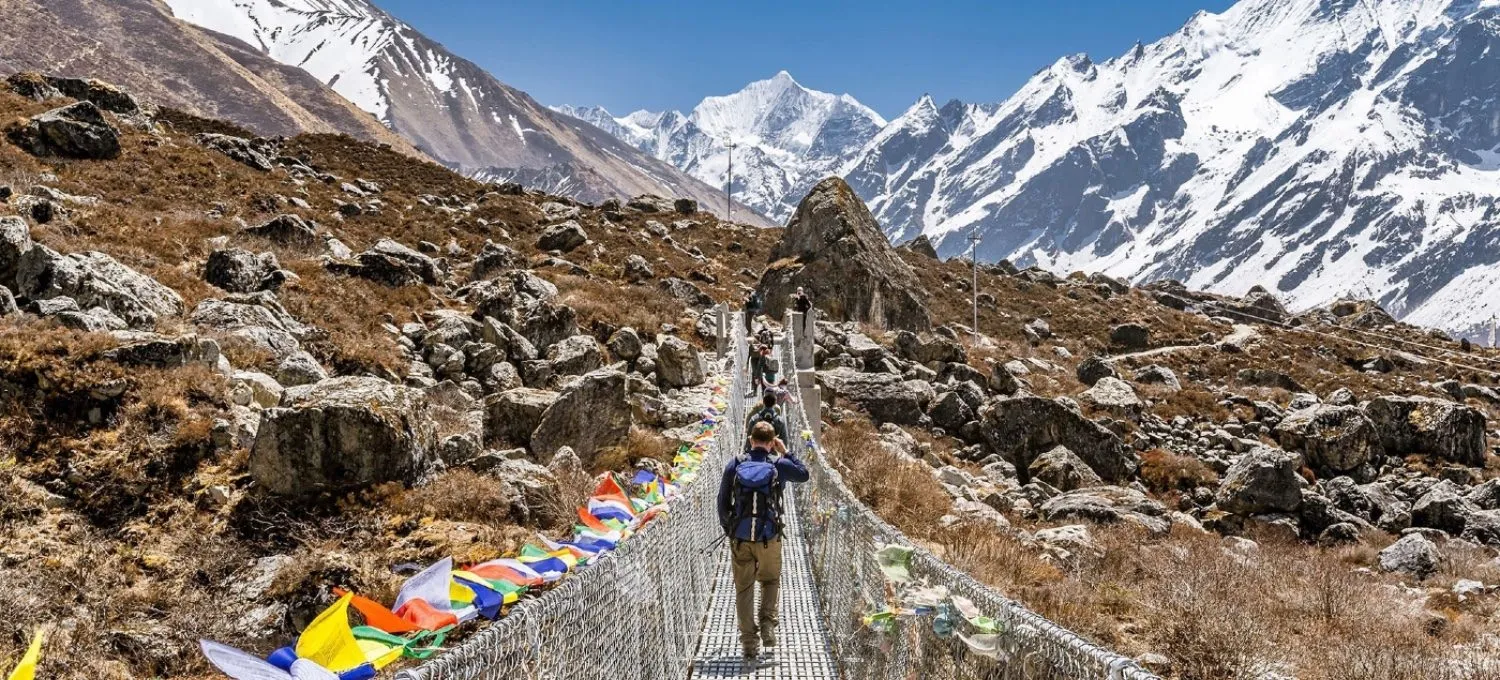
Major Attractions:
- Kyanjin Gompa: an isolated monastery with spectacular views besides local yak cheese.
- Langtang National Park is a place of diverse flora and fauna, including red pandas and snow leopards.
- Langtang Lirung Glacier: The magic glacier at the head of the valley.
- Traditional Tamang Villages: Cultural taste through friendly people with ancient traditions.
4. Manaslu Circuit Trek
The Manaslu Circuit Trek takes one around Mt. Manaslu at 8,163 m, the eighth highest mountain on Earth in an adventurous fashion way out in very remote areas. Supposedly a high mountain passes, rugged trails with cultural variety; in autumn, this is considered as one of the nicer landscapes that any avid trekker would seek for.
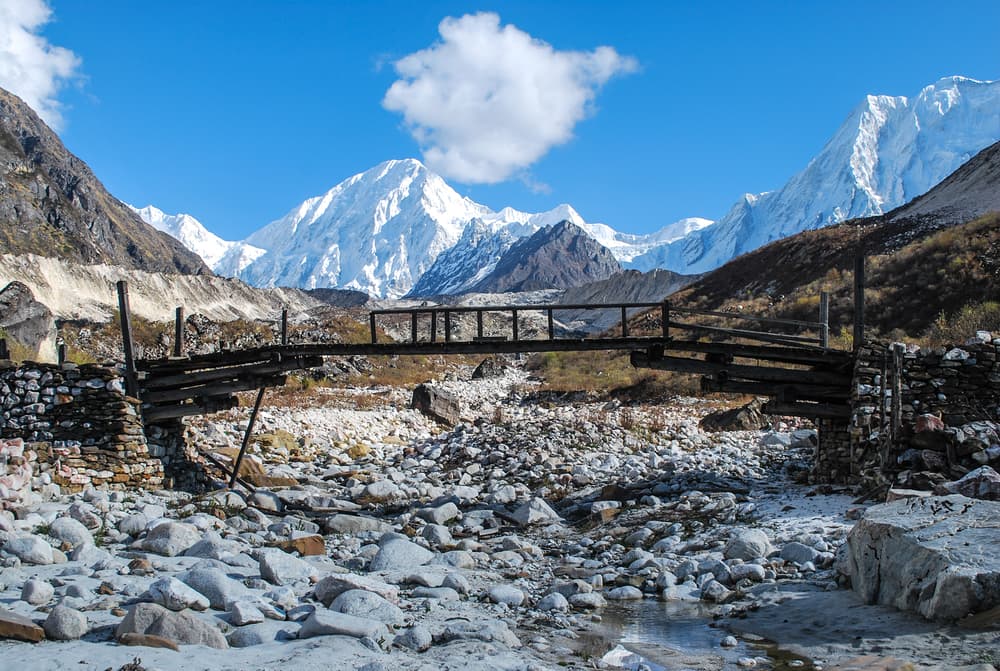
Major Attractions:
- Larkya La Pass: High-altitude pass with breathtaking panoramic views of snow-capped peaks.
- Manaslu Trek: great views of the mountain, close proximity to most of the range during the hike.
- Tsum Valley: home to one ‘hidden valley’, various ancient monasteries, and lots of Tibetan Buddhists.
- Relatively Untouched Trails: Getting away from the maddening crowd while trekking and quieter.
5. Ghorepani Poon Hill Trek
Ghorepani Poon Hill Trek is a rewarding, easy short trek. The treks strike through the rhododendron forests and picturesque villages onto Poon Hill at 3,210 meters and thus present sunrise views of the ranges strikingly.
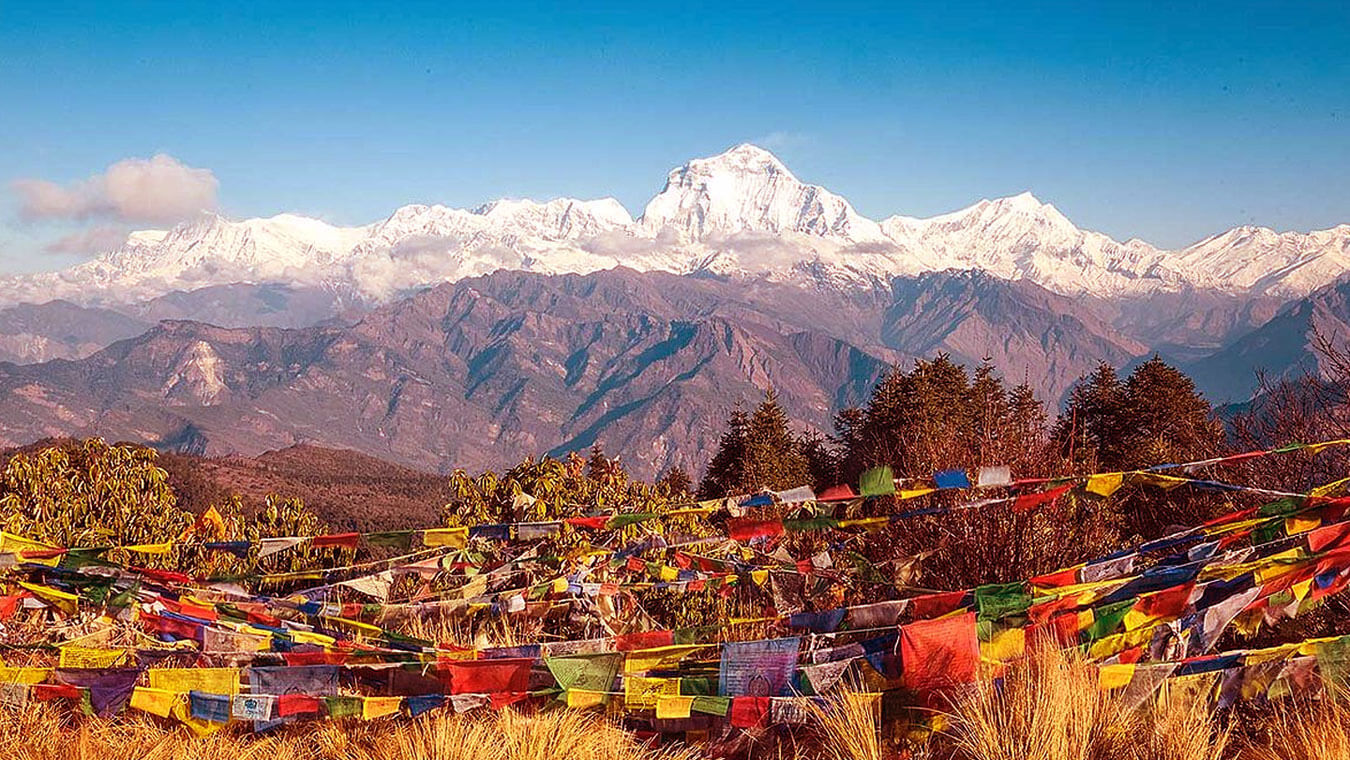
Major attractions include:
- Poon Hill: Generally known in the viewpoint to see the sunrise over the Himalayas.
- Rhododendron Forests: Vibrant blooms in spring, lush green in autumn.
- Traditional villages: Warm up with Gurung and Magar communities.
- Birdwatching: Observe some unique Himalayan species of birds in these dense forests.
6. Upper Mustang Trek
The Upper Mustang Trek takes one into the “Forbidden Kingdom” of Mustang, a region noted for its unique landscapes and Tibetan-influenced culture. A trek route will take you through barren cliffs, ancient caves, and centuries-old monasteries. Due to its isolated location, the traditions in Lo are so well preserved and, as such, are considered one of the more valuable cultural assets.
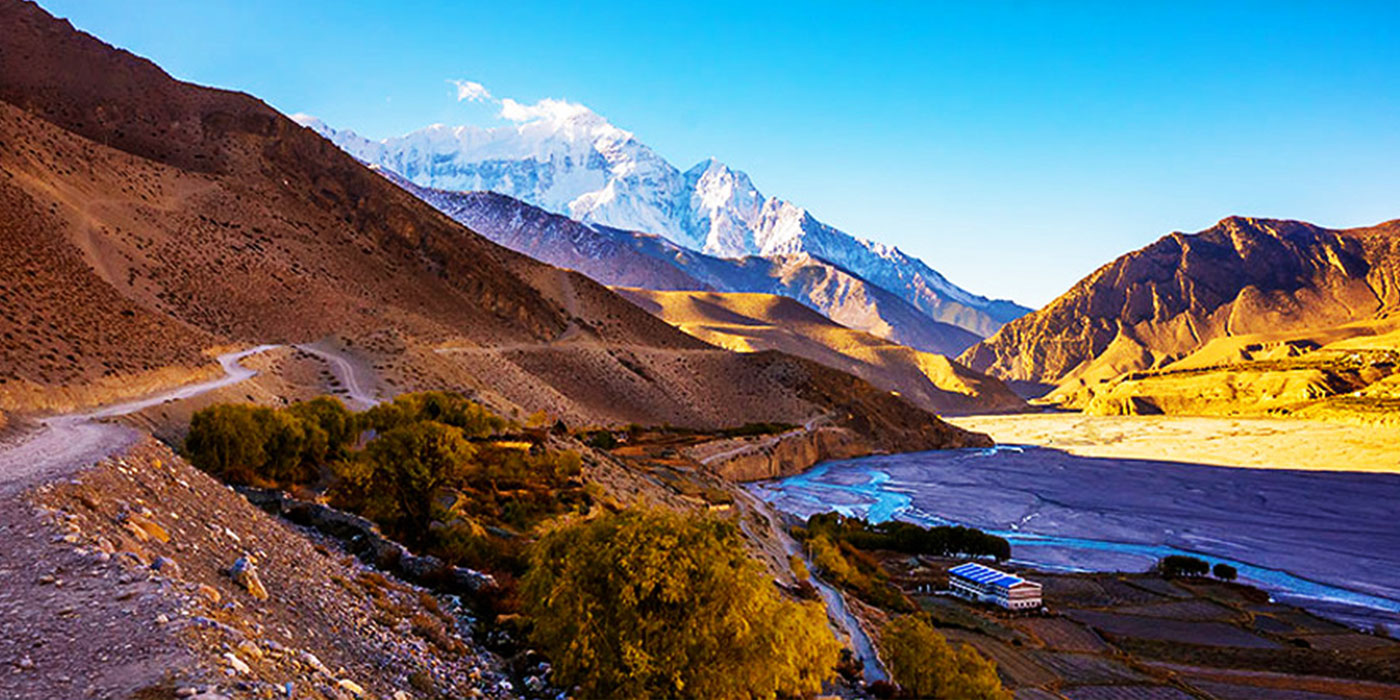
Major Attractions:
- Lo Manthang: Walled city and cultural heart of Upper Mustang.
- Chhoser Caves: Mysterious caves used for meditation and ancient habitation.
- Tiji Festival (Seasonal): Vibrant celebration based on Tibetan Buddhism.
- Desert-Like Landscapes: Dramatic cliffs, canyons, and red rock formations.
7. Mardi Himal Trek
Mardi Himal Trek is a recently developed virgin trail in the Annapurna region. It offers unprecedented close-up views of Mt. Machhapuchhre, popularly known as Fishtail, and the Annapurna range. This is a short but naturally rewarding trek with plush forests and a rugged ridge leading up to the high altitude viewpoint.
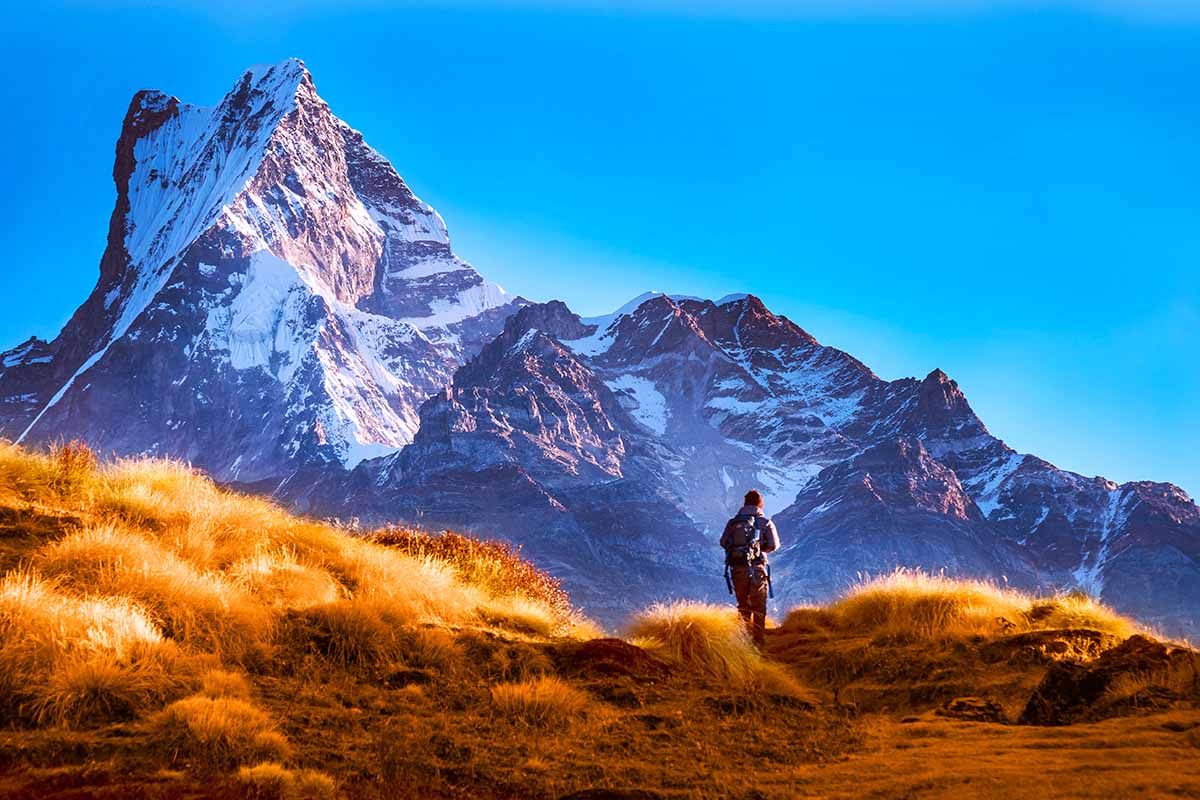
Main Attractions:
- Mardi Himal Base Camp: Spectacular vantage at the base of Mt. Machhapuchhre
- Machhapuchhre Viewpoint: Spectacular close-up view of the iconic peak.
- Hidden Trails: Experience loneliness and pristine wilderness.
- The forest walkways crossed rhododendom and oak forests.
Why Autumn is the Best Time for Trekking in Nepal
- No dust particle in the post-monsoon air provides crystal clear views of the mountains.
- Mild Temperatures: Good weather conditions prevail; hence, one can trek for a long time without much distress.
- You can enjoy festivals such as Dashain and Tihar adding color to your expedition.
Tips for Autumn Trek
Advance booking: Besides accommodation, permits and guides are to be booked well in advance if visiting during high time.
Packing the right equipment: Clothing: to be provided in layers; Trekking boots: good pairs; Sleeping bag: very much essential.
Acclimatization: Give time to your body to get tuned before going to challenging treks featuring high altitude.
Respect culture: Respect the culture and continue showing respect for guiding principles in an enriching atmosphere.
Conclusion
Autumn treks in Nepal are the gateways to some of the most stunning landscapes and cultural experiences on Earth. Be one who has trekked many times or is just a beginner; the trail awaits. Put on your boots and backpack, and off to the ultimate adventure-the Himalayas await!
FAQs
1. What is the best time for trekking in Nepal?
The best time for trekking in Nepal is autumn (September to November) when the weather is clear, skies are blue, and temperatures are mild, making it ideal for trekking.
2. How difficult are the treks in Nepal?
Nepal offers treks of all difficulty levels. Popular treks like Ghorepani Poon Hill are easier, while others like Everest Base Camp and Manaslu Circuit are more challenging due to altitude and terrain.
3. Do I need a permit for trekking in Nepal?
Yes, most trekking routes in Nepal require permits. Popular treks like the Annapurna Circuit and Everest Base Camp require ACAP and TIMS permits. Additional permits may be needed for restricted areas like Upper Mustang.
4. What should I pack for trekking in Nepal?
You should pack:
- Layered clothing for varying temperatures
- Trekking boots with good grip
- Sleeping bag for higher altitudes
- Sunscreen and hat for sun protection
- Water purification tablets or water filter
5. How long do the treks in Nepal take?
Trek durations vary by route. For example:
- Everest Base Camp: 12–14 days
- Annapurna Circuit: 15–18 days
- Ghorepani Poon Hill: 4–5 days
- Manaslu Circuit: 14–16 days
6. Is altitude sickness common in Nepal?
Yes, altitude sickness can affect trekkers above 2,500 meters, especially on treks like Everest Base Camp and Annapurna Circuit. It’s important to acclimatize properly, drink plenty of water, and ascend slowly.
7. Can I trek in Nepal without a guide?
You can trek independently on some routes (like Ghorepani Poon Hill), but for more remote or challenging treks (like Manaslu or Upper Mustang), hiring a guide is recommended and sometimes required.
8. What is the weather like during autumn trekking?
Autumn offers clear skies, mild daytime temperatures (around 10–15°C), and cooler nights (around 0–5°C at higher altitudes), making it perfect for trekking. However, it can get colder as you ascend.
9. Are there teahouses along the trekking routes?
Yes, popular trekking routes like Everest Base Camp and Annapurna Circuit have teahouses where you can rest, eat, and sleep. They provide basic facilities like food, drinks, and simple rooms.
10. How much does it cost to trek in Nepal?
The cost depends on the trek. A basic budget for a trek (including permits, guide, food, and accommodation) can range from $20 to $50 per day, with additional costs for special permits in restricted areas like Upper Mustang.
